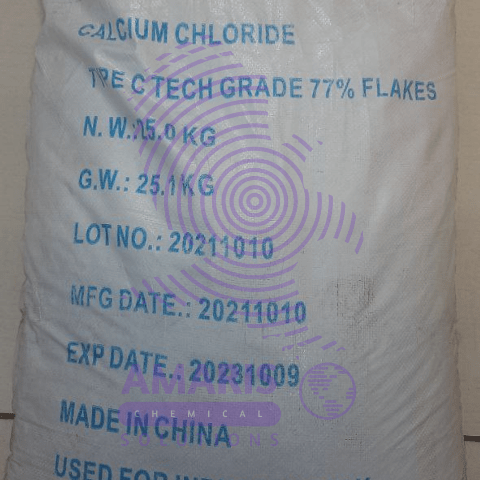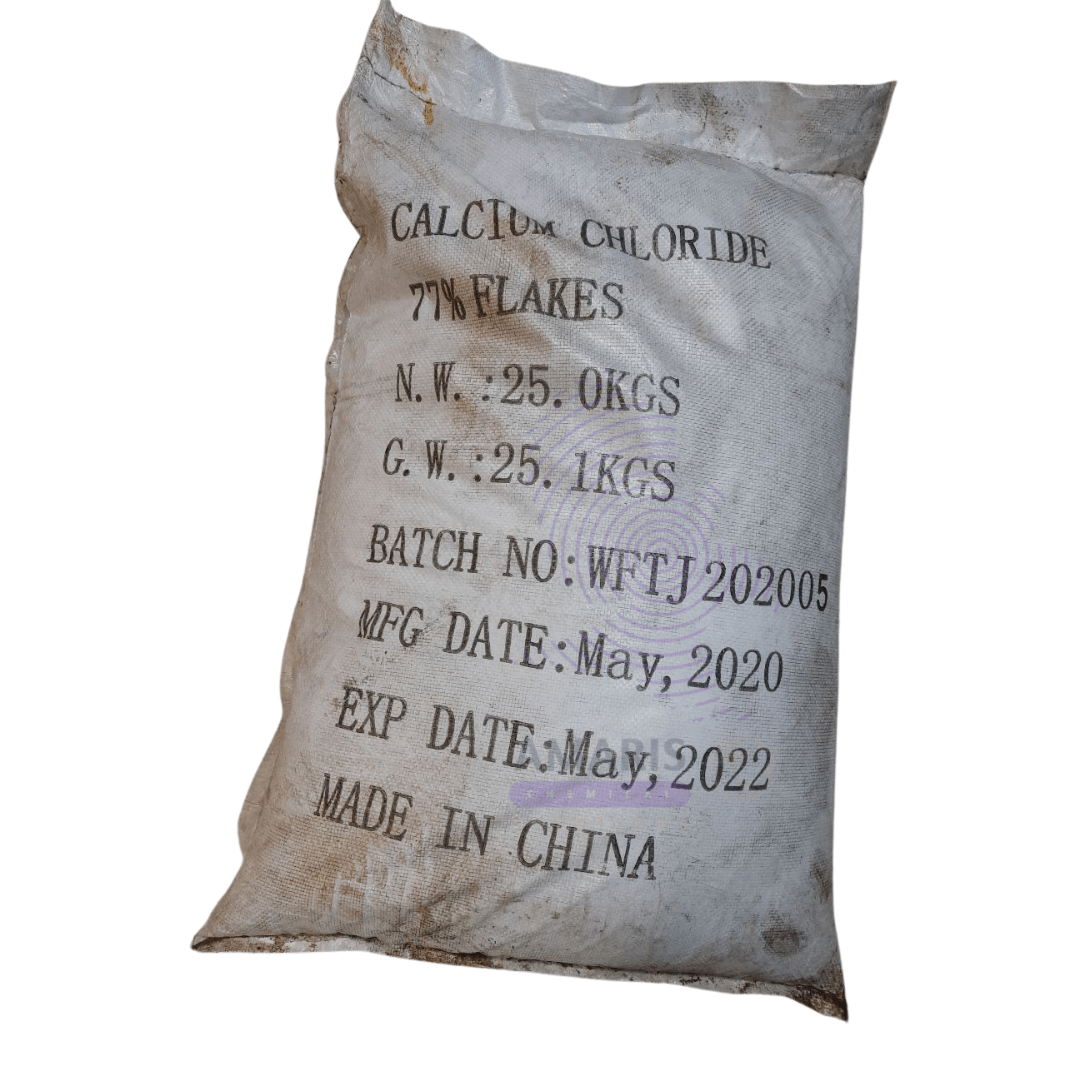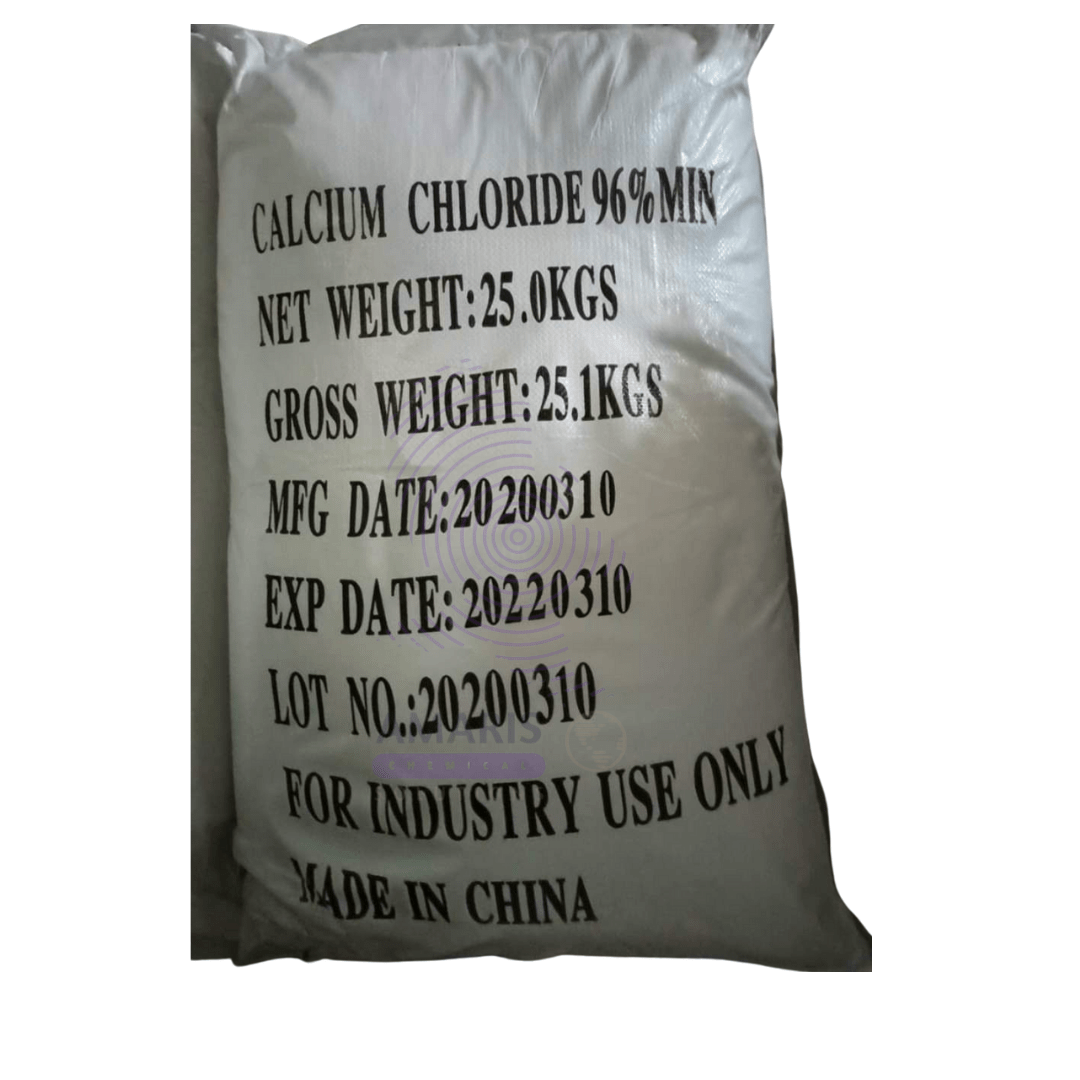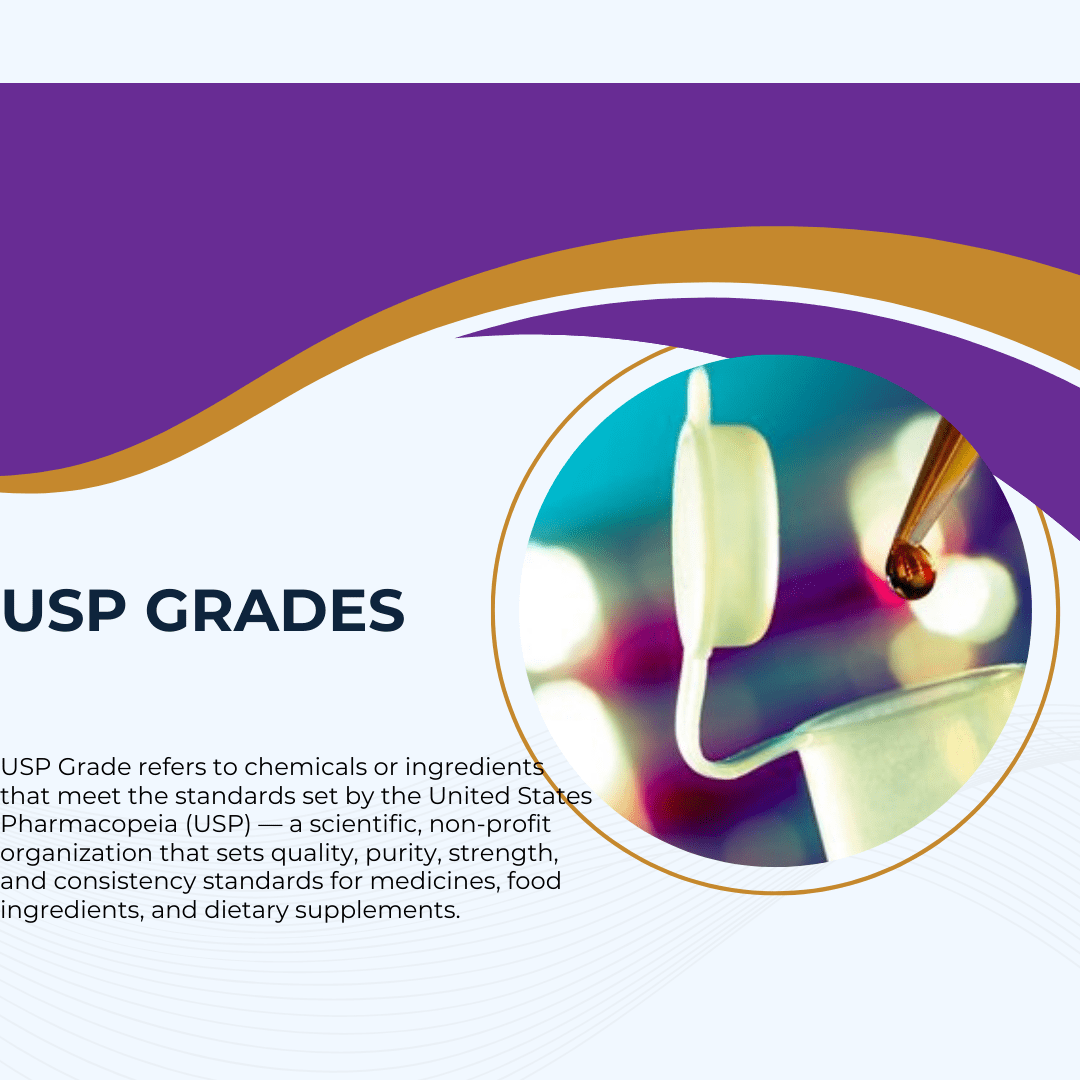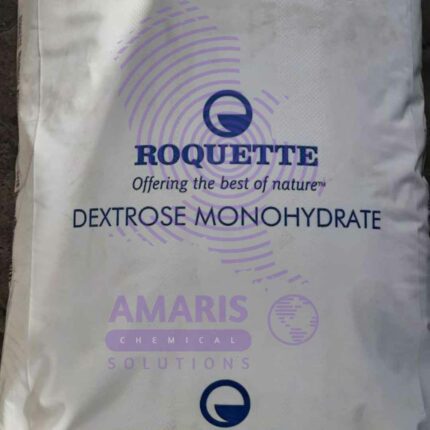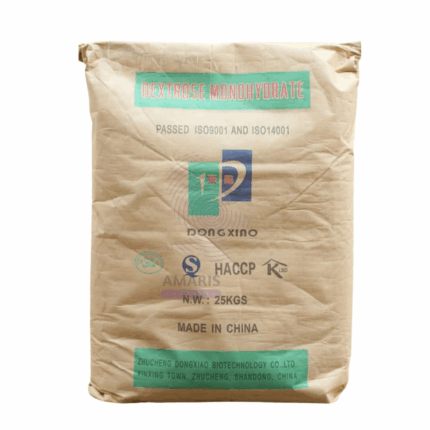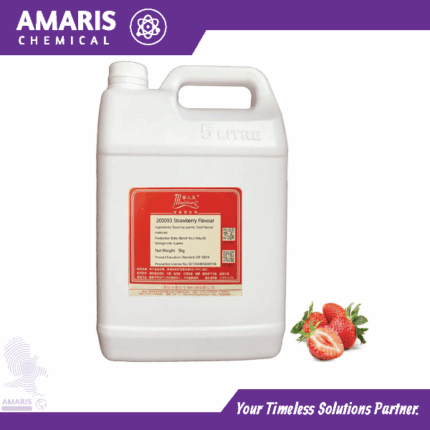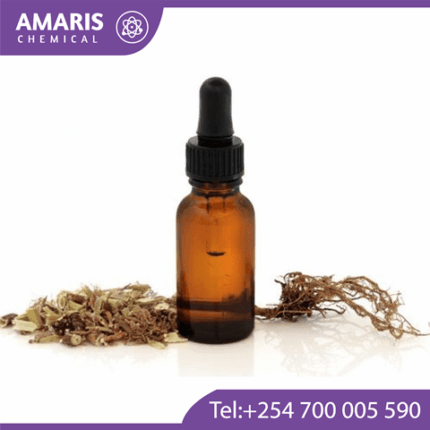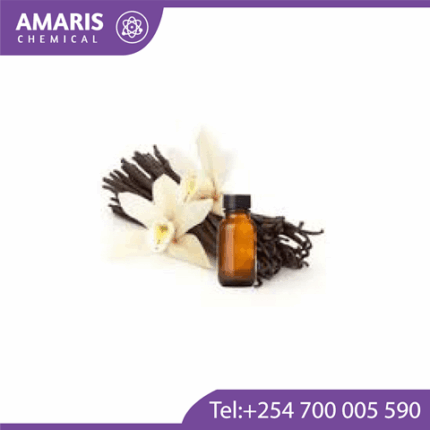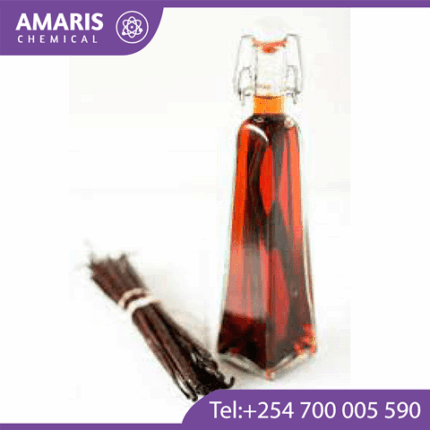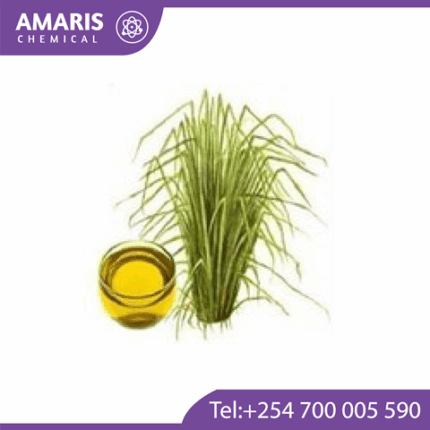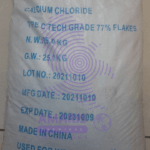
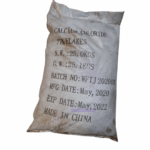



Calcium Chloride
$7,500.00 Original price was: $7,500.00.$7,400.00Current price is: $7,400.00.
Calcium chloride is a chemical compound with the molecular formula CaCl2. It is a salt composed of calcium and chlorine ions and is highly soluble in water. Calcium chloride is commonly used as a desiccant, de-icer, and in various industrial processes. It is also used in food and beverage applications as a firming agent, and in medicine as a source of calcium for people with calcium deficiencies.
Calcium chloride Uses
De-icing:
Calcium chloride is commonly used as a de-icing agent to prevent ice formation on roads, sidewalks, and runways.
Desiccant:
Calcium chloride is an excellent desiccant, meaning it can absorb moisture from the air. It is used to dry out and preserve a variety of materials, such as packaging, electronic equipment, and even art and artifacts.
Oil and gas industry:
Calcium chloride is used in the oil and gas industry as a brine to control the swelling of clay and shale formations and to increase the density of drilling fluids.
Food industry:
Calcium chloride is used in the food industry as a firming agent and as a source of calcium in various food products such as cheese, canned fruits and vegetables, and sports drinks.
Medical applications:
Calcium chloride is used in medicine as a source of calcium for people with calcium deficiencies.
Concrete acceleration:
Calcium chloride is used in the construction industry to accelerate the setting time of concrete.
Water treatment:
Calcium chloride is used in water treatment as a coagulant to remove impurities from water.
| AVAILABLE PACK SIZE |
25kg( Metal or Plastic Jerrycan/ Bucket, Bag, Box, Polythene bag, Carton bag) |
|---|---|
| APPEARANCE |
Flaky – Thin, layered fragments e.g., graphite flakes |
| COUNTRIES OF ORIGIN |
CHINA |
1. Basic Identification Attributes
- Chemical Name: Calcium chloride (IUPAC)
- CAS Number:
- Anhydrous: 10043-52-4
- Dihydrate: 10035-04-8
- Hexahydrate: 7774-34-7
- HS Code: 2827.20.00 (Inorganic chlorides)
- Molecular Formula:
- Anhydrous: CaCl₂
- Hydrated forms: CaCl₂·2H₂O (dihydrate), CaCl₂·6H₂O (hexahydrate)
- Synonyms:
- Anhydrous calcium chloride
- Calcium dichloride
- E509 (food-grade)
2. Physical & Chemical Properties
- Physical State:
- Anhydrous: White powder, pellets, or flakes
- Hydrated: Colorless crystals (hygroscopic)
- Color & Odor: White, odorless
- Boiling Point: 1,935°C (anhydrous) | Melting Point:
- Anhydrous: 772°C
- Dihydrate: 176°C (decomposes)
- Density:
- Anhydrous: 2.15 g/cm³
- Dihydrate: 1.85 g/cm³
- Solubility:
- Highly soluble in water (74.5 g/100 mL at 20°C)
- Soluble in alcohol, acetone
- pH Level: ~8–9 (5–10% solution; slightly alkaline)
- Vapor Pressure: Negligible
- Flash Point: Non-flammable
- Hygroscopicity: Absorbs moisture aggressively (desiccant properties)
3. Safety & Hazard Attributes
- Hazard Class (GHS):
- Category 2(Serious eye irritation)
- Category 2(Skin irritation)
- NFPA Ratings:
- Health: 1| Flammability: 0 | Reactivity: 0
- Exposure Limits:
- OSHA PEL: N/A (nuisance dust)
- ACGIH TLV: 10 mg/m³ (inhalable dust)
- Reactivity:
- Reacts exothermically with water (heat release)
- Incompatible with bromine trifluoride, oxidizers, strong acids
4. Storage & Handling Attributes
- Storage Conditions:
- Airtight containers (plastic or coated steel)
- Cool, dry, ventilated area (avoid humidity)
- Incompatible Materials:
- Metals (corrosive in presence of moisture)
- Organic compounds (risk of exothermic reactions)
- Container Type:
- Plastic (HDPE) or fiber drums with liners
- Shelf Life: Indefinite if kept dry
- Special Handling:
- Wear gloves, goggles, and dust masks
- Use in well-ventilated areas (dust control)
5. Regulatory & Compliance Attributes
- Regulatory Status:
- EPA: Listed as safe for road dust control (non-toxic)
- FDA: GRAS (Generally Recognized As Safe, E509)
- REACH: Registered
- Hazard Symbols (GHS):
- (Irritant)
- Transportation Restrictions:
- UN Number: Non-hazardous for transport (unless hydrated forms exceed limits)
- DOT: Not regulated (anhydrous)
- Waste Disposal:
- Dilute and dispose per local regulations (non-RCRA hazardous)
6. Environmental & Health Impact
- Ecotoxicity:
- Low toxicity to aquatic life (LC50 > 100 mg/L for fish)
- High concentrations can harm plants (soil salinity)
- Persistence:
- Not biodegradable but dissolves/migrates in water
- Carcinogenicity:
- Not classified (IARC, NTP, OSHA)
- Biodegradability: N/A (inorganic salt
Personal Protection
- Respiratory Protection: Use a NIOSH-approved N95 dust maskwhen handling powder in poorly ventilated areas.
- Eye Protection: Wear chemical splash gogglesand a face shield if handling concentrated solutions.
- Skin Protection: Use impermeable gloves (nitrile or neoprene)and protective clothing to prevent skin contact.
- General Hygiene: Avoid inhalation, ingestion, and prolonged skin exposure. Wash hands thoroughly after handling.
Handling & Storage
- Store in a cool, dry, well-ventilatedarea, away from moisture and incompatible chemicals (e.g., strong oxidizers, bromine trifluoride).
- Keep containers tightly sealedto prevent absorption of moisture (hygroscopic).
- Use non-sparking toolswhen handling large quantities.
- Avoid contact with water(exothermic dissolution, may cause splattering).
Spill Management
- For dry spills: Sweep up carefully (avoid dust generation) and dispose of in a sealed container.
- For liquid spills (solution): Absorb with inert material (e.g., vermiculite, sand) and clean with water.
- Large spills: Contain and prevent entry into drains or waterways (may be harmful to aquatic life).
Inhalation
- Move to fresh air
- If breathing difficulties occur, administer oxygenand seek medical attention.
Skin Contact
- Remove contaminated clothing.
- Rinse affected area with plenty of water for at least 15 minutes.
- If irritation or burns develop, seek medical attention.
Eye Contact
- Rinse immediately with lukewarm water for at least 20 minutes, holding eyelids open.
- Seek immediate medical attention(risk of corneal damage).
Ingestion
- Do NOT induce vomiting.
- Rinse mouth with water and drink milk or waterto dilute.
- Seek immediate medical attention(may cause gastrointestinal irritation or burns).
Non-flammable, but reacts exothermically with water (can cause steam burns or splattering).
Hazardous Decomposition:
- At high temperatures (>772°C), decomposes into calcium oxide and chlorine gas.
Extinguishing Media:
- Use dry chemical powder, CO₂, or sandfor surrounding fires.
- Avoid water jets(can intensify reaction with hot CaCl₂).
Firefighter Protection:
- Wear self-contained breathing apparatus (SCBA)and full protective gear.
- Cool containers exposed to fire with water spray from a safe distance.



 LABORATORY EQUIPMENT & APPARATUS
LABORATORY EQUIPMENT & APPARATUS
 Fertilizers
Fertilizers Plant Growth Regulators
Plant Growth Regulators Soil Conditioners
Soil Conditioners Animal Feed Additives
Animal Feed Additives Biostimulants
Biostimulants Dough Conditioners
Dough Conditioners Flour Treatments
Flour Treatments Fat Replacers
Fat Replacers Preservatives (baking)
Preservatives (baking)
 Surfactants (cleaning)
Surfactants (cleaning) Builders
Builders Bleaching Agents
Bleaching Agents Enzymes
Enzymes Solvents (cleaning)
Solvents (cleaning) Fragrances
Fragrances

